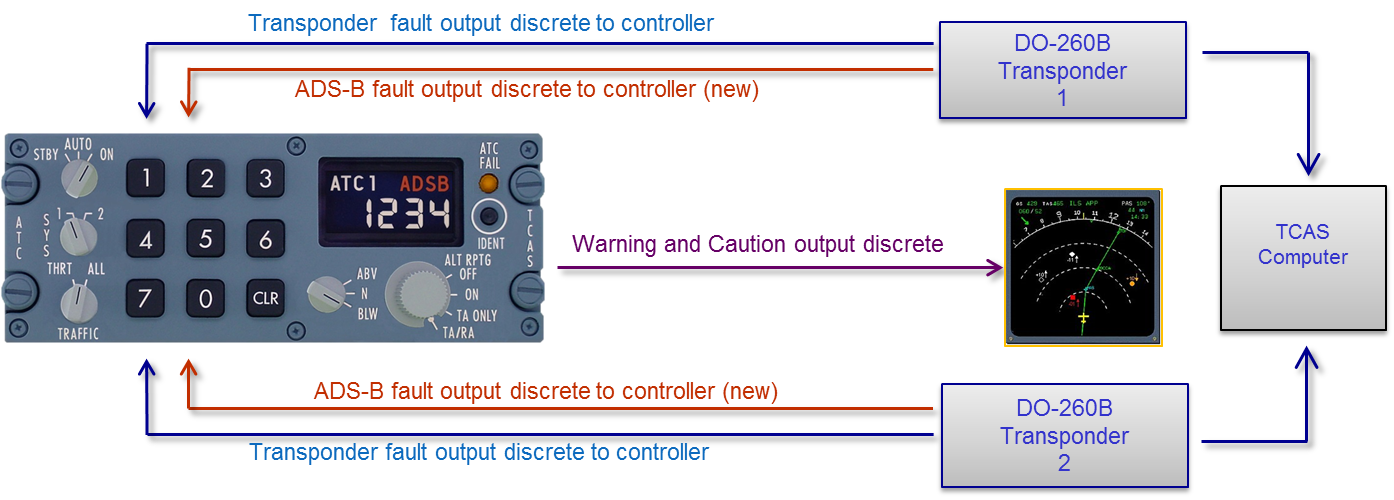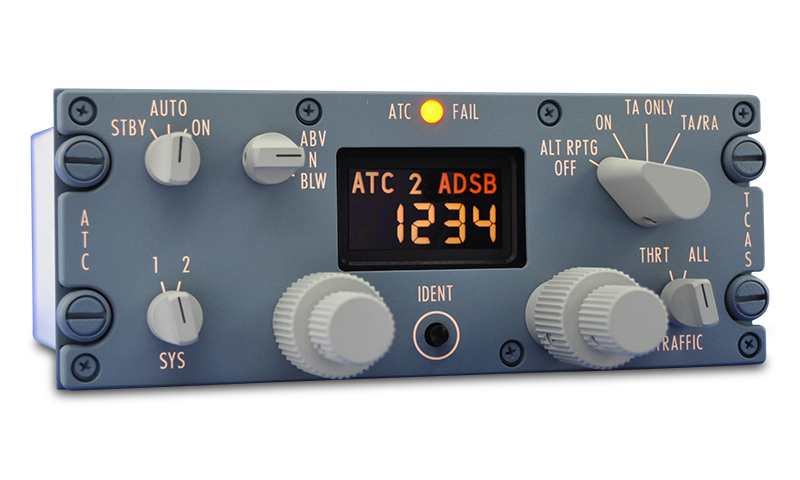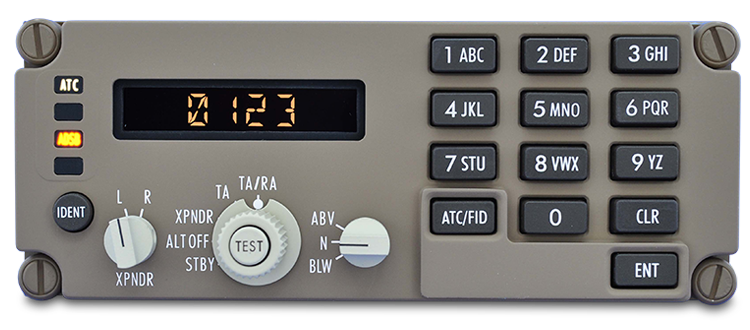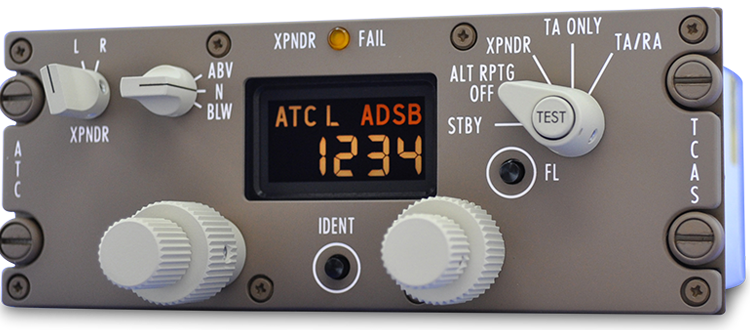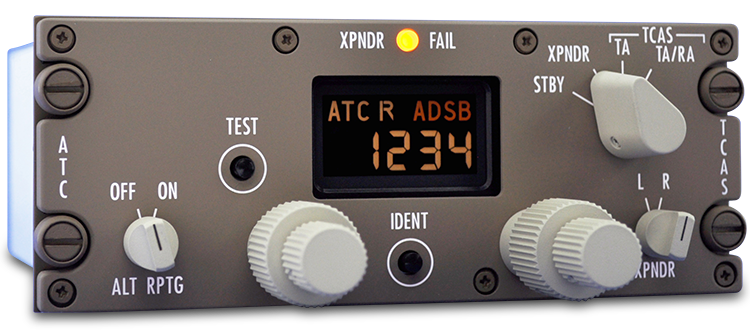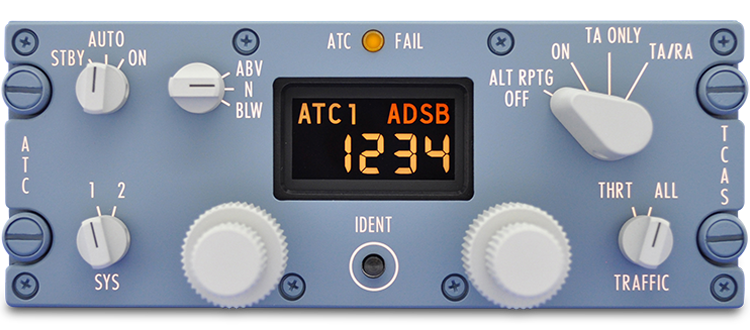ADS-B Failure Annunciation. Right where it belongs.
Who needs complicated procedures to determine the difference between a transponder failure or an ADS-B function failure? Annunciation of an ADS-B function failure should be simple and intuitive. Our solution puts the ADS-B fail annunciation in the control panel. Transponder failure indicator function is unchanged. It’s your choice whether to “couple” or “de-couple” the ADS-B and transponder fault discretes.
Here’s how we do it.
For air transport aircraft, DO-260B transponder manufacturers offer independent failure discrete outputs, one for a transponder fault and a separate discrete for an ADS-B function failure. By bringing the ADS-B fault discrete from the transponder to the control panel, we are able to provide a separate, yet integral ADS-B failure annunciation right where it belongs, in the control panel.
Coupled Mode – ATC FAIL and ADS-B discretes coupled at the transponder
For an ATC fault, the control panel will illuminate only the “ATC FAIL” indicator and activate the Warning and Caution output discrete, same as always.
For an ADS-B function failure, the control panel will illuminate both the “ATC FAIL” and “ADSB” indicators and activate the Warning and Caution output discrete. In this case, the “ATC FAIL” indicator serves as an attention getter when there is no EICAS message in the forward field of view.
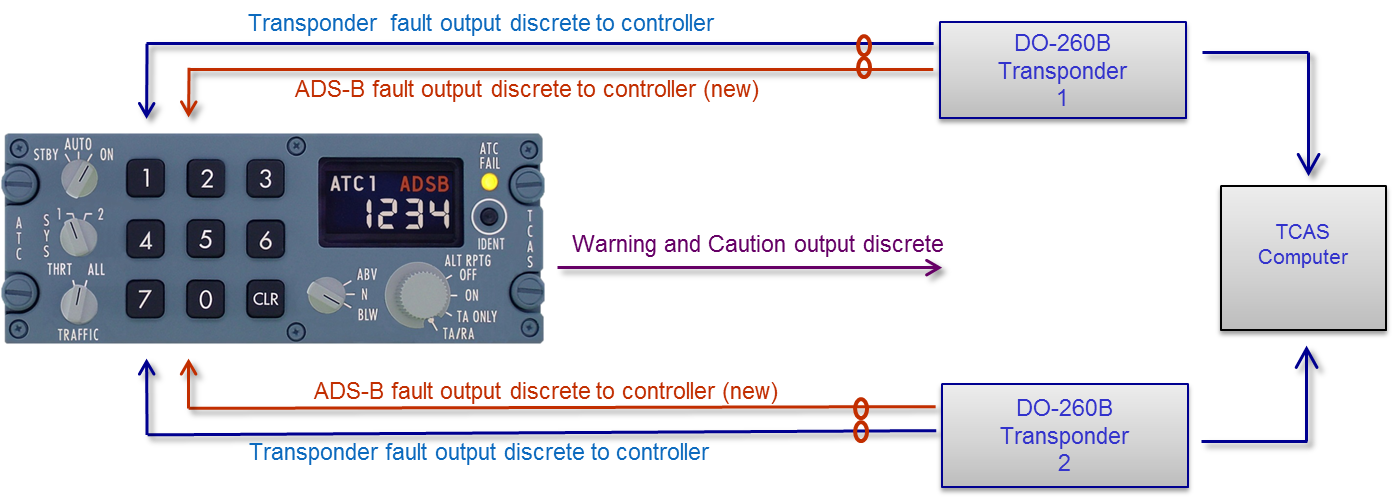
De-coupled Mode - ATC FAIL and ADS-B discretes de-coupled at the transponder
For an ATC fault, the control panel will illuminate only the "ATC FAIL” indicator and activate the Warning and Caution output discrete, same as always.
For an ADS-B function failure, the control panel will illuminate only the “ADSB” indicator and activate the Warning and Caution output discrete to the ECAM or EICAS display.
